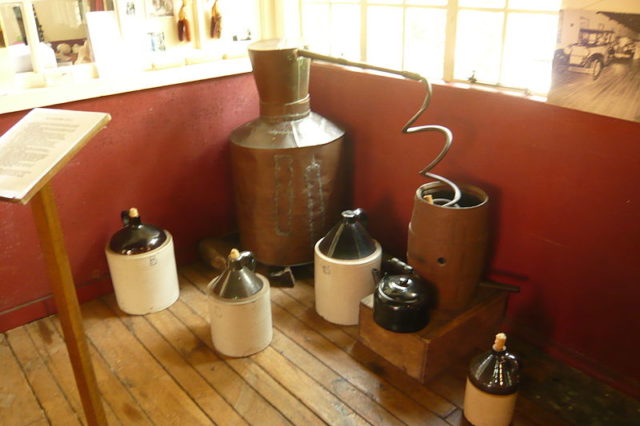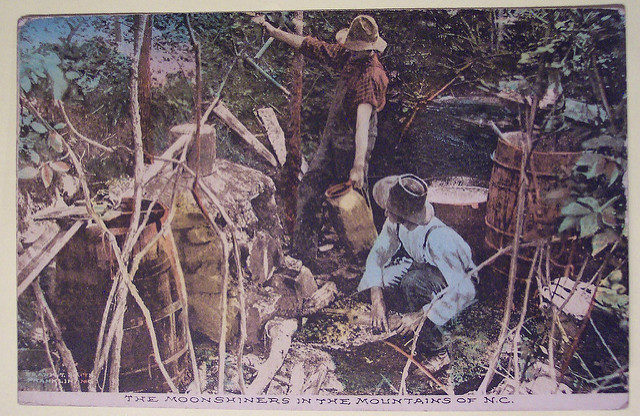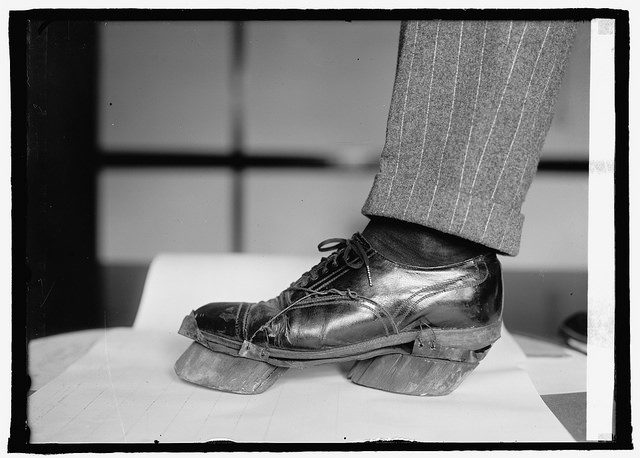The Prohibition era in the United States took place from 1920 until 1933, banning the production, import, and sales of alcoholic beverages.
A result of a strongly led campaign by pietistic Protestants, the new law had the purpose of sobering the nation and putting an end to alcoholism and family violence.
The law did not ban the consumption of alcohol, only its production. Every bottle of spirit which was produced and stashed before 1920 could be drunk by its owners, but only in the privacy of their homes.
Prohibition brought many undesired effects, such as the growth of organized crime, deaths from homemade alcohol and a decrease in tax and revenues. Unsurprisingly, a black market appeared very quickly. Some gangsters, like Al Capone, took advantage of the situation and made vast fortunes by illegal sales of the desired commodity. A group of lesser criminals who denied the law were the moonshiners, people who brewed and sold their homemade Moonshine.

The term moonshine is used to describe an illegally produced type of whiskey, made with corn mash as the main ingredient. Hidden in the forests, the moonshiners made their own distilleries which they used mostly at night to avoid discovery. With the federal government constantly on their backs, these illegal white whiskey producers had to be careful, always working on new ways to avoid capture.
Since it was not the digital age and no trail was left for the authorities, the police had to track the criminals through the forests by foot time after time. The tracks of the moonshiners were the only trail leading to the illegal distilleries, so the clever criminals invented a way to mask them by the usage of the so-called “cow shoe”.

The idea probably came from a Sherlock Holmes’s story, where a villain attached fake cow hoofs to the feet of his horse to avoid detection. The same was done by the moonshiners, with the only difference being that they attached the faux hoofs onto their shoes. With those shoes on, the imprints they left on the ground resembled those of a cow. So, when policemen saw them, they would ignore the trail.

The cow shoe is actually a metal strip tacked with a wooden block, which is carved to look like the hoof of a cow, and strapped to a human foot. One example of the shoe was found near Port Tampa and sent to the prohibition department in Washington, thus the authorities learned about the existence of this smart invention. The same undercover gadget was described in an article in a Florida newspaper in 1922, so the world found out about the cunning of the moonshiners.

The discovery of the cow shoes by the police did not mean an end to Prohibition. The Prohibition had the opposite effect than the one planned. With its introduction, the crime rate increased by 24%, homicides by 12.7 % and drug addiction by 44.6% – the prohibition law actually brought more bad news than good. With organized crime and the black market flourishing, the bootlegging of alcohol became a very profitable business.
One desperate attempt of the government to stop the people from drinking was the deliberate poisoning of industrial alcohol, which led to the deaths of more than 10,000 people during the Prohibition era. The era came to an end on 5 December 1933, when the Twenty-first Amendment was ratified, repealing the Eighteenth Amendment which enforced the Prohibition. The damage was, however, already done and the effects were unstoppable. With the wealth gained from the illegal alcohol trade, the Prohibition established the basis for organized crime to develop and grow in the following decades.
